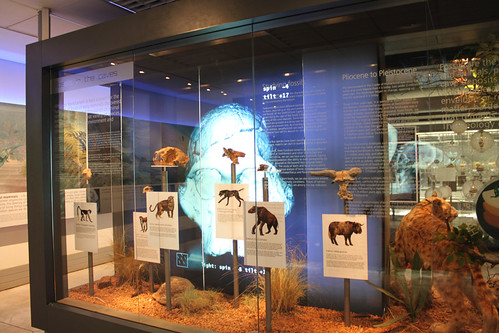The Cradle of Humankind Site comprises a strip of a dozen
dolomitic limestone caves containing the fossillised remains of ancient forms
of animals, plants and most importantly, hominids. The dolomite in which the
caves formed, started out as coral reefs growing in a worm shallow sea about
2.3 billion years ago.
The Cradle of Humankind site lies mainly in the Gauteng
province with a small extension into the neighboring North West Province, and
covers 47 000 hectares of land mostly privately owned. The Cradle of Humankind
Site comprises a strip of a dozen dolomitic limestone caves containing the
fossillised remains of ancient forms of animals, plants and most importantly,
hominids. The dolomite in which the caves formed, started out as coral reefs
growing in a worm shallow sea about 2.3 billion years ago.
As the reefs died off they were transformed into limestone
which some time later was converted into dolomite. Millions of years later
after the sea had receded, slightly acidic groundwater began to dissolve out
calcium carbonate from the dolomite to form underground caverns. Over time the
water table dropped and the underground caverns were exposed to the air. The
percolation of acidic water through the dolomite also dissolved calcium
carbonates out of the rock into the caverns, which formed stalactites,
stalagmites and other crystalline structures. Continued erosion on the earth's
surface and dissolution of the dolomite eventually resulted in shafts or avens
forming between the surface of the earth and the caverns below. Bones, stones
and plants washed down these shafts into the caves; and animals and hominids
fell into the caves, became trapped and died.The bone and plant remains became
fossilized and along with various stones and pebbles became cemented in a hard
mixture called breccia.
At least seven of the twelve sites have yielded hominid
remains. In fact, together these cave sites have produced over 850 hominid
fossil remains, so that to date they represent one of the world's richest
concentrations of fossil hominid bearing sites.The scientific value of this
area lies in the fact that these sites provide us with a window into the past,
to a time when our earliest ancestors were evolving and changing. Scientists
have long accepted that all humans had their origins in Africa.
Through the use of biochemical evidence they have argued
that the split of the human lineage (Hominidae) from that of the African apes
took place around 5-6 million years ago. The study of hominid fossils from
sites in Africa thus enables scientists to understand how these hominids have
changed and diversified since then.
.jpg)


No comments:
Post a Comment